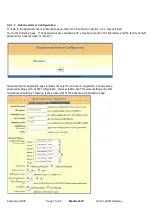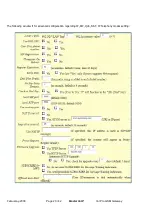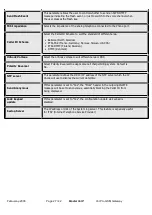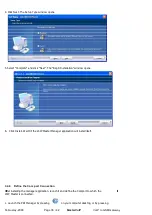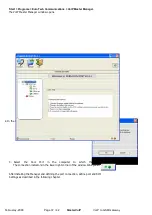
Februaray-2006 Page 26 / 42
MasterVoIP
VoIP to GSM Gateway
Via TFTP Server
This is the IP address of the configured tftp server. If it is non-zero or not
blank, the IP phone will attempt to retrieve new configuration file or new code
image (update) from the specified tftp server at boot time. It will make up to 3
attempts before timeout and then it will start the boot process using the existing
code image in the Flash memory. If a tftp server is configured and a new code
image is retrieved, the new downloaded image will be verified and then saved
into the Flash memory.
Note: DO NOT interrupt the TFTP upgrade process (especially the power
supply) as this will damage the device. Depending on the network environment
this process can take up to 15 or 20 minutes.
Via HTTP Server
The URL for the HTTP server used for firmware upgrade and configuration via
HTTP. For example,
http://provisioning.mycompany.com:6688/Grandstream/1.0.5.16
Here
“
:6688
”
is the specific TCP port that the HTTP server is listening at, it can
be omitted if using default port 80.
Note: If Auto Upgrade is set to
“
No
”
, VoIP Client ATA will only do HTTP
download once - at boot up.
Automatic HTTP
Upgrade
Choose
“
Yes
”
to enable automatic HTTP upgrade and provisioning.
In
“
Check for new firmware every
”
field. Enter the number of days period.
VoIP Client ATA will check the HTTP server for firmware upgrade or
configuration after the defined number of days.
When set to
“
No
”
, VoIP Client ATA will only do HTTP upgrade once at boot
up.
SUBSCRIBE for
MWI
Default is
“
No
”
. When set to
“
Yes
”
a SUBSCRIBE for Message Waiting
Indication will be sent periodically.
Offhook
Auto-Dial
This parameter allows the user to configure a User ID or extension number to
be automatically dialed upon offhook. Please note that only the user part of a
SIP address needs to be entered here. The phone will automatically append the
“
@
”
and the host portion of the corresponding SIP address.
Enable Call Feature
Default is No. If set to Yes, Call Forwarding & Do-Not-Disturb are supported
(locally).
Disable Call
Waiting
Default is No.
Send DTMF
This parameter controls the way DTMF events are transmitted. There are 3
ways: in audio which means DTMF is combined with the audio signal (not very
reliable with low-bit-rate codec), via RTP (RFC2833), or via SIP INFO.
DTMF Payload
Type
This parameter sets the payload type for DTMF using RFC2833
Summary of Contents for GSM gateway
Page 17: ...Februaray 2006 Page 17 42 MasterVoIP VoIP to GSM Gateway Here are the status details shown ...
Page 22: ...Februaray 2006 Page 22 42 MasterVoIP VoIP to GSM Gateway ...
Page 34: ...Februaray 2006 Page 34 42 MasterVoIP VoIP to GSM Gateway ...
Page 38: ...Februaray 2006 Page 38 42 MasterVoIP VoIP to GSM Gateway ...








